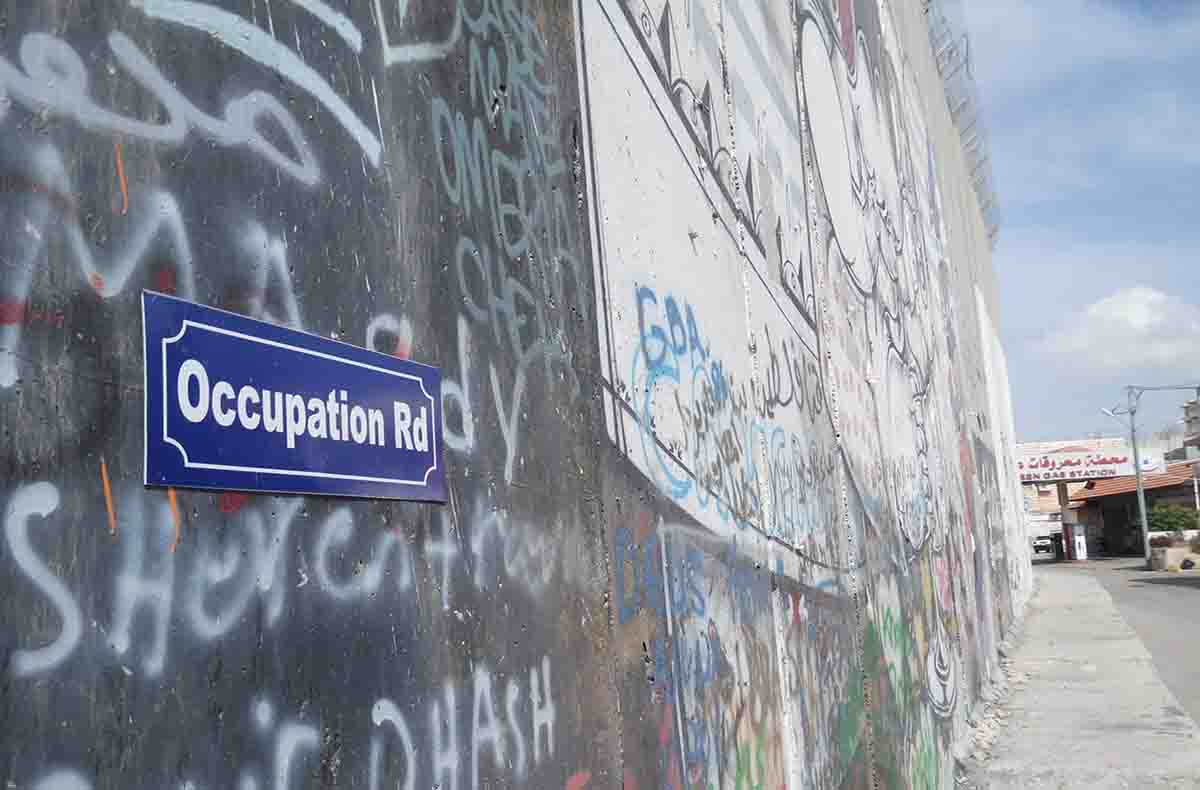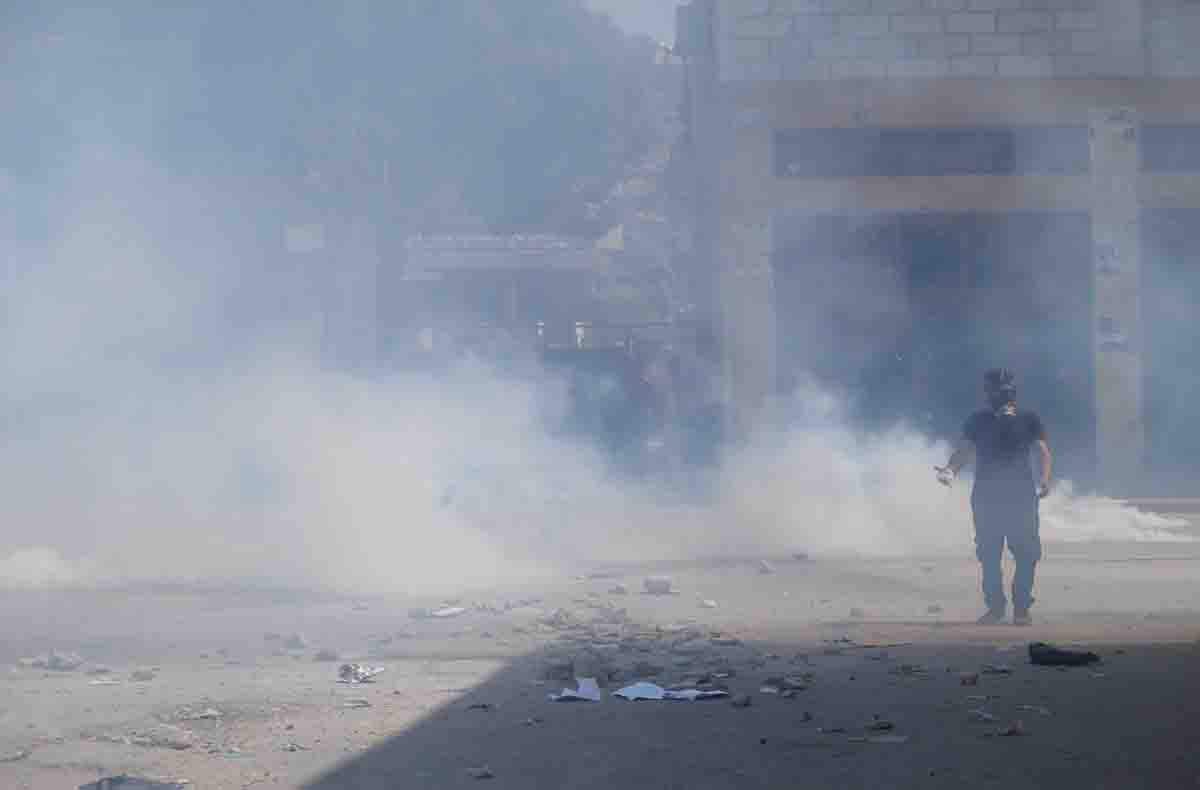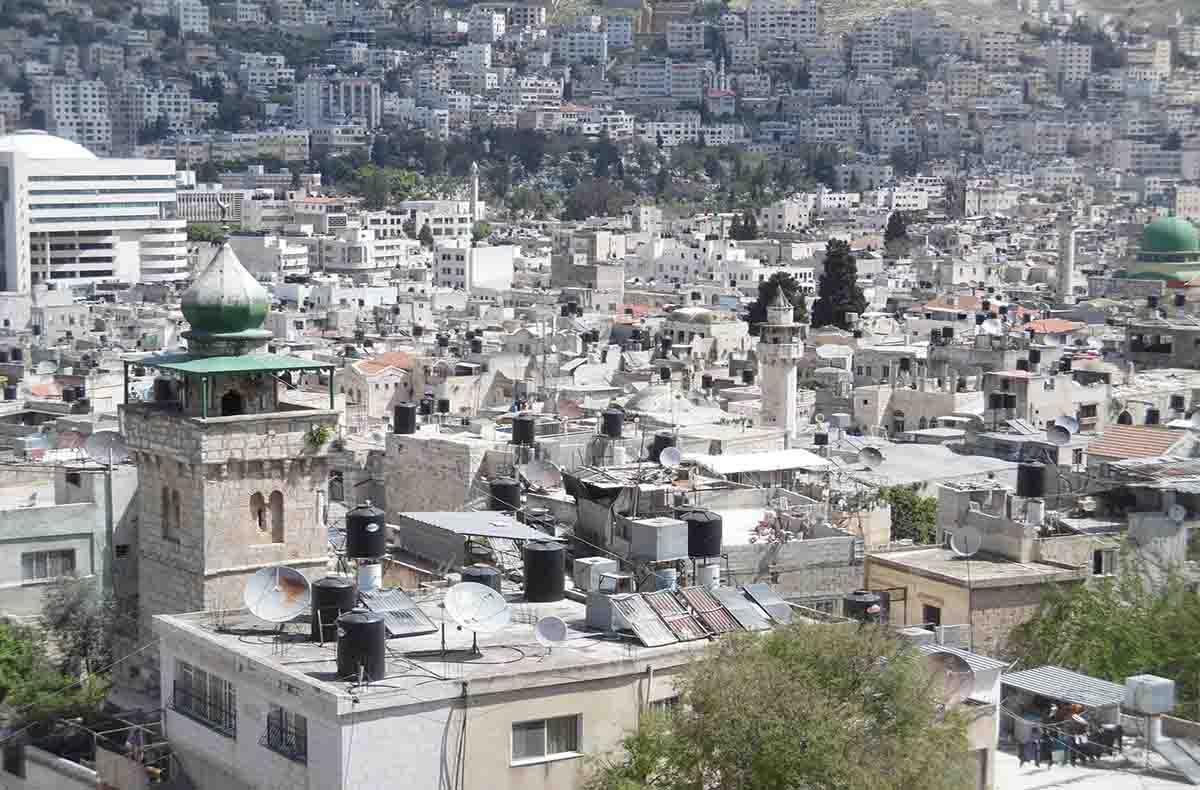
Photo by Sarah Edgcumbe
When I asked her what she would like to say to those reading this article series, Maya said: “I encourage readers to dig a little deeper for the truth.”
She emphasized that we all have a responsibility to each other as humankind; as we fought to end slavery of Black people, so should we fight to end the colonization and ethnic cleansing of Palestinians.
Although a third intifada has not yet erupted, some commentators caution that it is likely on its way, with Israel’s newly-elected far right government acting as the catalyst.
Young Palestinians are becoming increasingly disenfranchised with the current leadership in the West Bank, which aside from being constantly embroiled in corruption, has failed to protect them from violent IOF raids, targeted murders, and ever-increasing expansion of settlements.
Several new armed groups are reported to have emerged in Palestine over the past year and a half—foremost among them, the Lion’s Den in Nablus.
Since the beginning of the year, violence has begun to escalate on both sides, and the two-state solution is now further out of reach than ever before, resulting from the Israeli government’s commitment to settlement expansion, and Ben-Gvir’s encouragement of violence against Palestinians.
If a third intifada does erupt, it is likely that Nablus will be the center. For the women of Nablus who are old enough to remember the second intifada, they know that they emerged stronger.
As Zeinab, a community leader from Nablus informed me, “the occupation hasn’t taken away from the character of women—it has added to it. It was the catalyst for women becoming stronger in the community.”
In times of conflict and violence, where men comprise the majority of active fighters, the male narrative takes precedence, dominating our understanding of events and how we frame righteousness: causes, strategies, fighters, and victims. Very little, if any, attention is paid to women, other than to categorize them as victims.
For Palestinian women, victimhood is irrevocably intertwined with defiance and resistance, agency and loss. During the same month that I met Zeinab in 2017, I also met two other women who had been active during the second intifada: Hala and Samar.
Both of these women shared their stories, matter-of-factly layering the horror of the Israeli invasion of Nablus’ old city against their actions as part of the resistance, and the corresponding sacrifices this entailed.
Hala enlisted in the volunteer medical team at the onset of the invasion of the old city of Nablus during the second intifada in the early 2000s. IOF soldiers often encircled the main hospital in Nablus, attempting to arrest anybody being admitted with wounds inflicted by Israeli weapons.
As a result, a field hospital was established in the biggest mosque in the old city, and Hala was stationed here.
She was pregnant at the time, but volunteered regardless to help her community resist Israeli occupying forces. Men and women worked together closely in this field hospital, which received a high number of casualties.
“During the first two days of the invasion,” she described, “the patients had simple injuries. After this, they came in with much more serious injuries. One injured man had been hit directly in the stomach with a rocket. It had almost cut him in two. After the first two days, most injuries were like this.”
By the time the injured could be relocated to the main hospital, there were ten dead and eighty injured to be moved. As a result of combined exhaustion and shock, Hala miscarried and has been unable to conceive children ever since.
Today, Hala works at a women’s center in Nablus, which was established by Zeinab. She works within a wide, sometimes elaborate network of women to ensure a healthy, educated, tightly knit community exists in defiance of the occupation.
Samar enlisted as a volunteer medic when she was eighteen years old. The Israeli invasion of Nablus was under way and she wanted to more actively support the resistance. During the period that the IOF had surrounded the main hospital in the city, a badly-wounded man who had been shot was taken to Samar for treatment.
She took him to a house in the old city where she nursed him back to health. Samar did not know at the time that this man was on Israel’s “most wanted” list, but says that even if she had known, she would have given him medical treatment and nursed him back to health regardless.
Seven months after the man was initially shot, the Israelis found out who had nursed him and came looking for her.
After being arrested and dragged out of her house in the middle of the night, Samar spent one month and four days in solitary confinement being interrogated before finally being charged and sentenced to three years and seven months in prison.
During the interrogation period, the Israeli forces used psychological methods to try to break her. They told her her mother was in the hospital and that they were going to destroy her family home as punishment—collective punishment is often meted out by the IOF and Israeli authorities.
It was not until Samar was finally able to speak to her lawyer that she was assured that her mother was well and the family home had not been demolished.
From that day, Samar says she became mentally resilient enough to carry on and “refused to let the Israelis break” her. Samar’s overwhelming memories from prison were how the Palestinian women “were united as one hand.” The guards treated [them] badly and tried to turn [them] against each other, but the “women remained united.”
Women’s resistance networks are organic, fluid and ad hoc, capable of galvanizing and transgressing into overt or organized forms of resistance when urgency dictates it to be necessary, before resuming less visible supportive roles.
Importantly, whereas factional fighting led by men has at times weakened Palestine’s ability to present a united front against Israel, the women I spoke with presented a picture where women remain united regardless of political affiliation.
We should therefore recognize that, alongside performing multiple modes of resistance on a daily basis, women are the glue that binds communities together, and can therefore justifiably be described as the backbone of the revolution.
If a third intifada erupts, and women’s voices remain silenced or overlooked, we cannot hope to gain a comprehensive understanding of the dynamics of conflict, nor the dynamics of peace.
It is clear that Palestinian women are united with their men in resisting an Israeli occupation that is escalating rapidly in terms of violence, hate speech, and complete dissolution of the two-state solution. The situation will only continue to escalate until the voices of Palestinian women like Maya, Zeinab, Hala and Samar are elevated and taken seriously.


